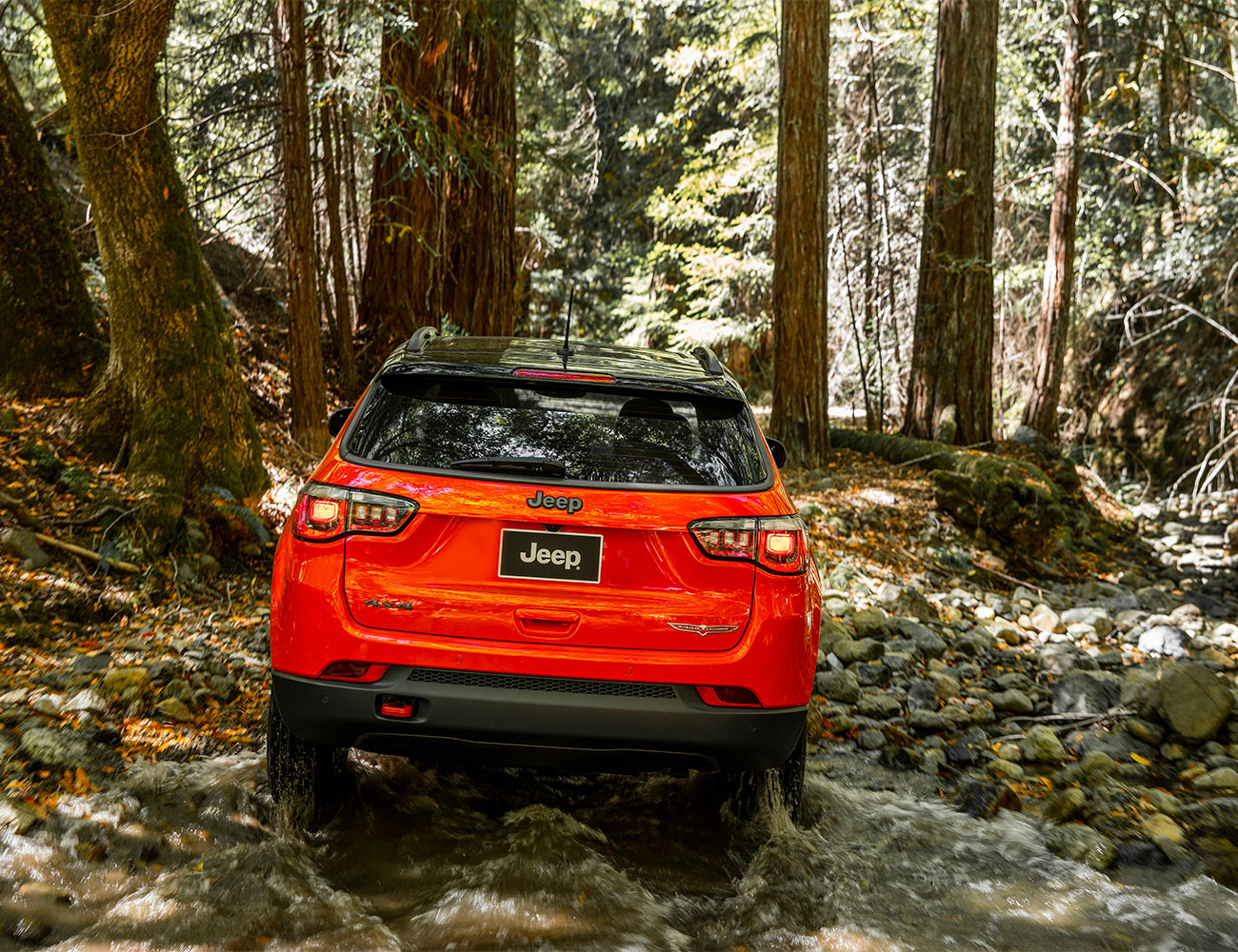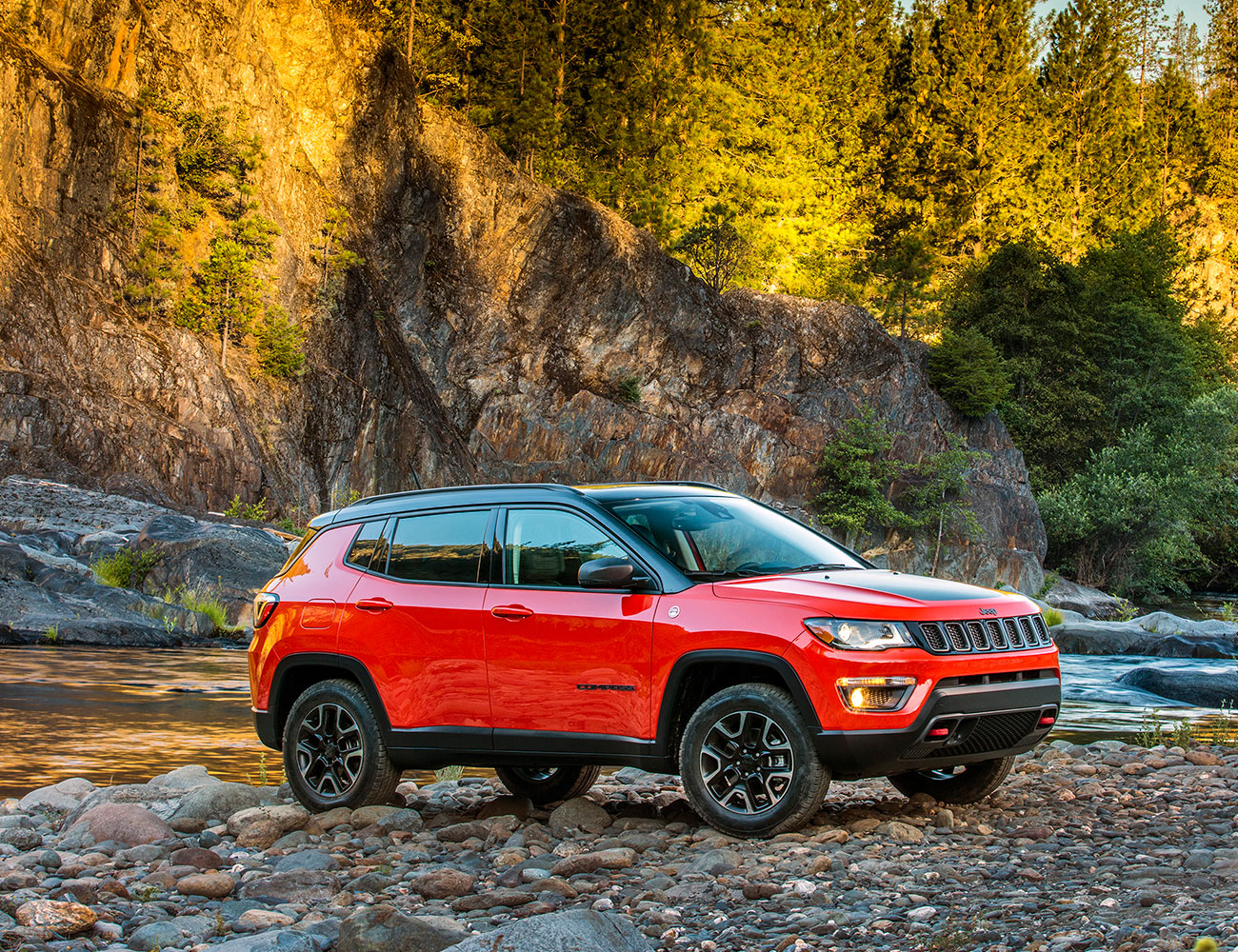The Jeep Compass is a four-door compact crossover that slots between the subcompact Renegade and the larger Cherokee in the off-road-centric brand’s SUV lineup. The Compass overlaps with both cars in price, but that internal competition hasn’t hurt the Compass; it experienced a bigger jump in year-over-year sales in 2018 than the new Jeep Wrangler.
The Good: The Compass offers sharp looks inside and out, with ample personalization options across seven different trim and sub-trim levels. Crucially, it does so at a reasonable price point. It’s not the most off-road-ready Jeep, but it’s still a Jeep, making it more rugged than much of the compact SUV competition.
Who It’s For: Empty nesters, young adults, and teenagers. These buyers want the Jeep brand, don’t want to pay a lot per month for it, and aren’t concerned with needing a lot of space.
Watch Out For: The ride quality, even by Jeep standards, could use some refinement. The transmission shifts slowly, the engine is loud, the suspension is tight, and the brakes are grabby. And the sleek looks compromise space in the rear.
Alternatives: Jeep offers the Cherokee ($25,490) and Renegade ($18,750); comparable vehicles from other manufacturers with similar capabilities and price range to the Compass include the Subaru Crosstrek ($21,895), the Hyundai Tucson ($20,950), and the Mazda CX-5 ($24,350).

Review: Not long ago, the Jeep Compass was the definition of an anonymous SUV. Like the Commander or the Patriot, you heard the name from time to time, but without badging, it would have been near impossible to distinguish it from any Jeep model besides the Wrangler.
The second generation has seen a sales renaissance. The compact sport-ute more than doubled its year-over-year sales in 2018, breaking into the top 25 best-selling U.S. vehicles, and expanding its share of Jeep sales from 10 percent to 17.5.
Why did the Compass become so popular, so suddenly? Well, perhaps most importantly, it now looks great. The second-gen Compass became more muscular and less boxy, excising every trace of the ungainly Dodge Caliber design that once plagued it. The Compass is not as cutesy than the Renegade, with strong hints of Grand Cherokee and even a wee bit of Land Rover in the optional contrasting black roofline. With seven different trims, you can customize a Compass down to the color of the tow hooks. The interior feels clean and premium (manually adjusted seats on my tester excepted).
Besides looking great, the Compass is cheap, with a base price of just $21,095. Most buyers will choose four-wheel-drive and an automatic transmission, pushing the base model into the still-reasonable $23,000s. Even a fully-loaded High Altitude trim tops out just below $35,000. Incentives can make that price even cheaper; a current deal in my area offers a four-year lease on a Limited trim for $189 per month.
Driving an Upland-trim Compass around for a week, however, revealed why car reviewers haven’t been as keen on this Jeep as the buying public has. The Compass is not terrible for a daily driver: the steering is decently calibrated; the 2.4-liter inline-four’s 180 horsepower and 171 pound-feet felt adequate; and the Compass’s grip and height can handle winter weather and some mild off-pavement motoring.
But the finer points of the driving experience will leave you disappointed. The brakes are too touchy for smooth stopping. The throttle is grabby, too; even a tentative touch on the gas pedal throws you back into your seat and makes the engine sound like you’re redlining a small Fiat. The “Upland suspension” on my tester felt too tight. The nine-speed automatic transmission shifts painfully slow; the six-speed manual available on the Sport and Latitude trims may be the way to go.
The Compass also sacrifices practicality to its nods to current trends. The sloping roofline looks sporty, but it impinges on the cabin; I’m 5’11”, and my head just about grazed the roof in the rear seat. I had trouble navigating my toddler through the narrow sliver of space between his car seat and the roof. The narrow rear window and chunky pillars obstruct visibility—a problem that’s compounded when seats are occupied. (That said, the Compass offers more cargo space than the bigger Jeep Cherokee.)
Tech-wise, Uconnect may be the best of the automakers’ proprietary infotainment systems; it’s intuitive, it’s responsive, and it’s easy to use while operating the vehicle. The seven-inch display in my Upland trim felt crowded, but I’m not sure the 8.4-inch would be worth the $1,000-plus upgrade. My only real annoyance was the seat heaters turning on full blast when the outside temperature drops below 40 degrees and having to navigate a menu to turn them off. (Shouldn’t that work the other way around?)
As noted, the Compass isn’t a Wrangler. But, “attractive, small, a bit impractical, and cheap” was the Wrangler formula long ago, before Jeep converted that car to an upmarket vehicle. These days, the Compass fits that role.

Verdict: The Compass offers Jeep looks and capability at a bargain price point, making it a better overall package than the Renegade or the Cherokee. It’s easy to see why customers are flocking toward it, even if the on-road character underwhelms. Families could get more space, better handling, and greater efficiency elsewhere in the compact SUV market…but they wouldn’t be getting a Jeep.
2019 Jeep Compass Upland 4×4 Specs
Price: $21,845 (base MSRP); $29,175 (as tested)
Powertrain: 2.4-liter inline four; nine-speed automatic; four-wheel-drive
Horsepower: 180
Torque: 175 lb-ft
Fuel Economy: 22 mpg city/30 mpg highway
Jeep provided this product for review.

Hot takes and in-depth reviews on noteworthy, relevant and interesting products. Read the Story

